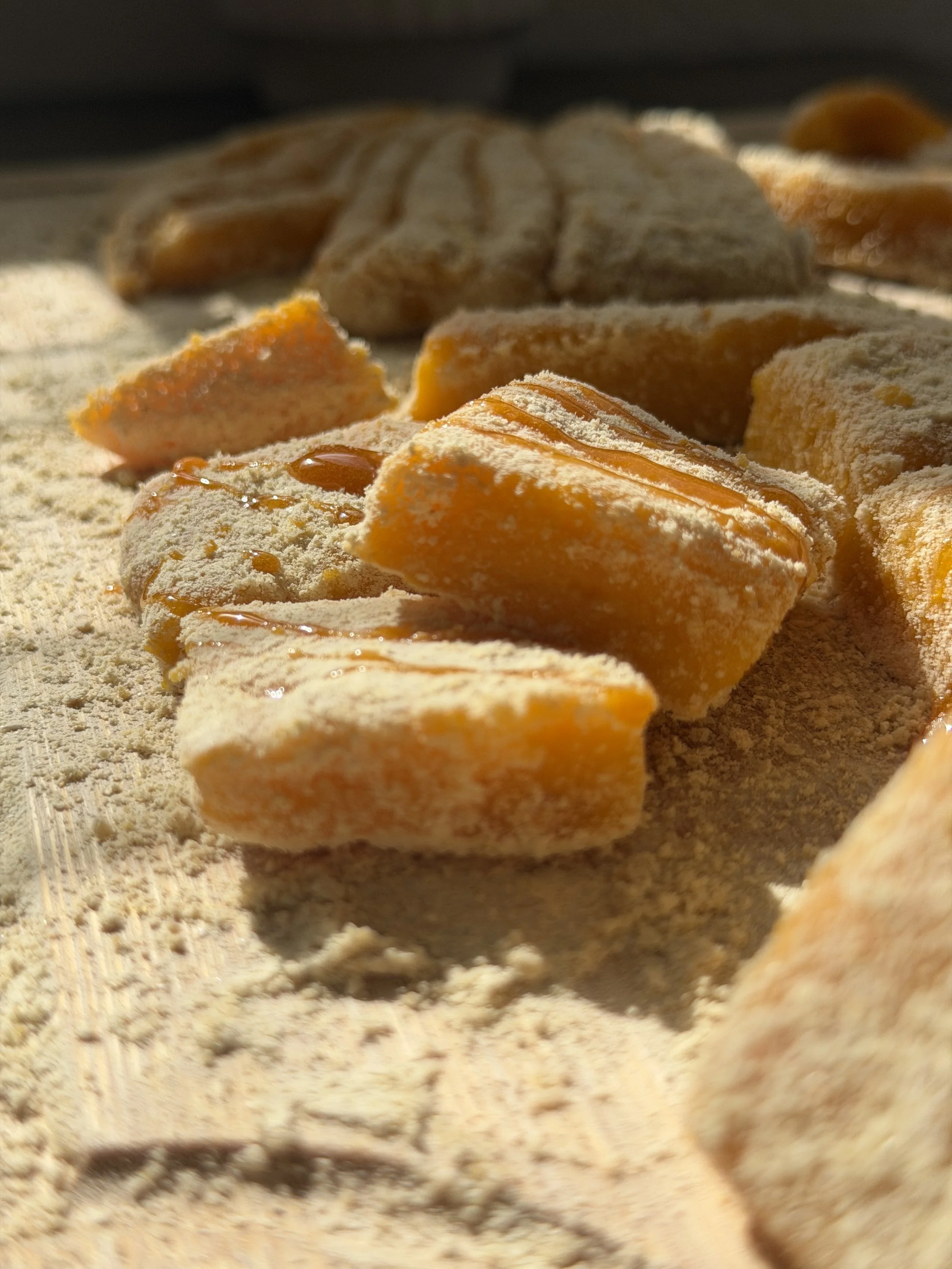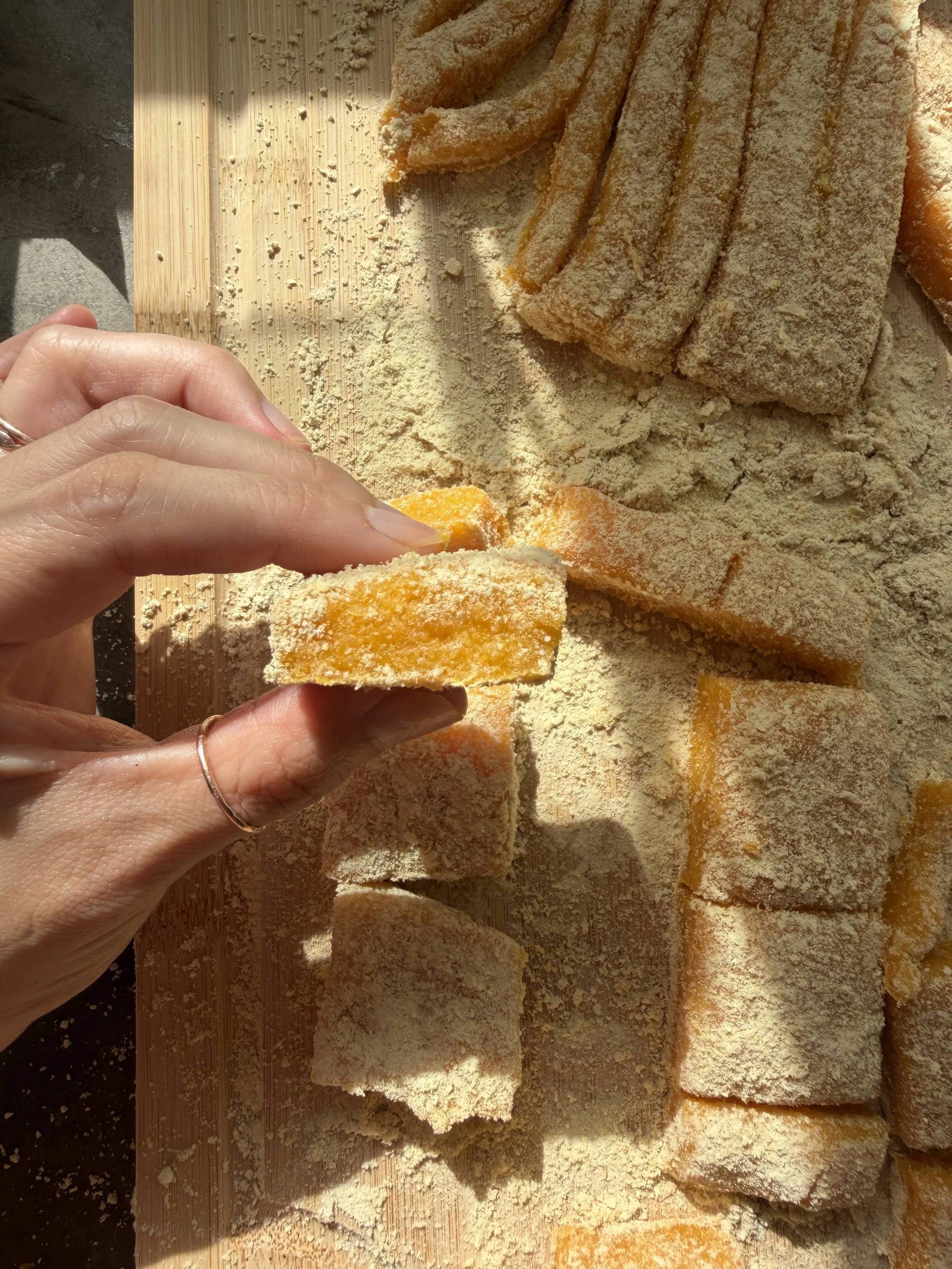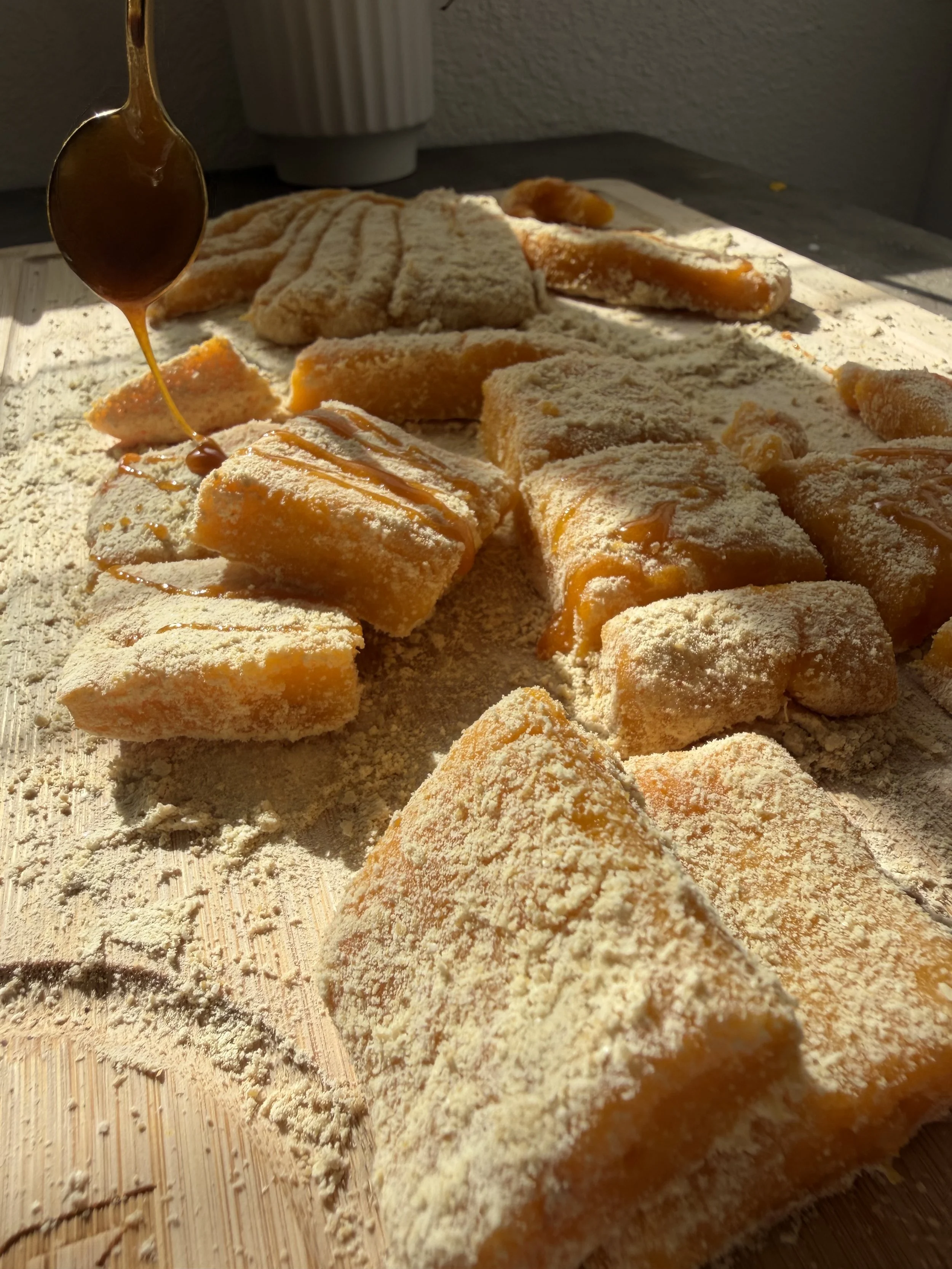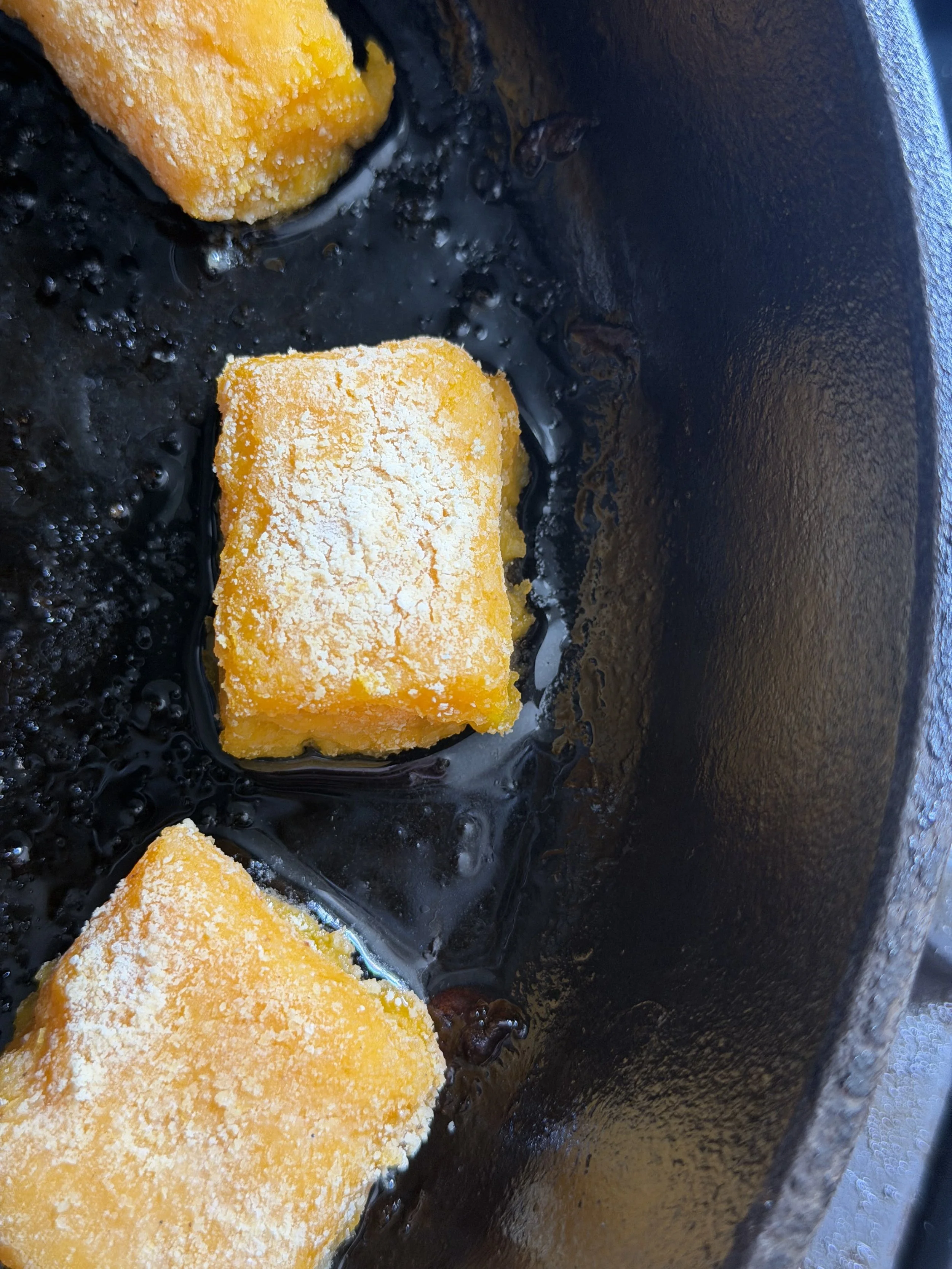Sweet Pumpkin Mochi Rice Cake (Hobak Tteok) 🍁 Gut-Friendly
Discover a modern, gut-friendly twist on traditional Korean Hobak Tteok 단호박 떡 (Sweet Pumpkin Rice Cake). Made with raw honey, soaked-soured rice, and protein-rich Chocho powder, this cozy fall dessert supports balanced blood sugar and easy digestion.
INGREDIENTS
For the rice base:
500g (~3 cups) soaked & soured sushi rice (linked my go-to)
200ml (~3/4 cup) filtered water
500g sweet pumpkin “Kabocha Squash” (peeled & de-seeded weight / before steaming)
1 tbsp raw honey (plus extra for drizzling)
1½ tsp sea salt
1 tbsp apple cider vinegar (for souring)
For coating:
*1 scoop Be Well by Kelly Unflavored Chocho Plant Protein Powder
(code MUMWITHABUN for $10 off)
Optional: swap for the Vanilla Chocho Plant Protein Powder (for extra sweetness)2 tsp grass-fed tallow (for finishing in parchment paper)
Optional: extra drizzle of raw honey
METHOD
Prepare the Rice
Soak & Sour 500g (approximately 3 cups) of sushi rice overnight (8–12 hours) by submerging it in filtered water & simply add a TBSP of apple cider vinegar.
Recommendation: “soak & sour” it to boost digestibility / nutrient absorption - full step x step and benefits here.
Strain / rinse well.
Steam the Sweet Pumpkin
Peel, de-seed, and cube 500g of sweet pumpkin.
Steam for about 20 minutes, until completely soft
(a chopstick would slide right through when it’s done).Let cool slightly.
Make the Pumpkin Mixture
In a heat-resistant blender, combine steamed pumpkin, 200ml water, raw honey, and sea salt.
Lastly, add the rice.
Blend until smooth and creamy.
Steam the Pumpkin Rice Cake Dough
Pour the blended pumpkin + rice mixture into your heat safe bowl - the hobak tteok batter should be like pancake batter (thick but pourable).
Fill the bowl only about ¾ full to allow for expansion.
Cover loosely with non toxic parchment paper to prevent water droplets from dripping onto the cake.
Use a steamer setup— it’ll prevent burning / bring the smooth, soft, bouncy rice cake texture.
Add 2–3 cups of water to the bottom chamber (make sure it doesn’t touch the upper bowl).
Begin heating the water over medium heat so it produces steady steam.
Carefully place the bowl of pumpkin rice cake dough + parchment paper cover in the top chamber. Close the lid.
Steam over medium heat for 40 minutes, until a toothpick inserted into the center comes out clean.
Turn off the heat and let it rest, covered, for 3 minutes before uncovering.
5. Massage with Tallow
Spread tallow onto the rice cake (it will melt fast)
Place the steamed pumpkin rice cake mound onto a parchment paper.
Massage the dough (use the parchment paper to prevent it from sticking to your hands) to bring on the soft, bouncy texture.
After kneading the dough, form it into a pillow-y mound.
At this point, some use cake crumbs or soybean powder to coat the tteok, but I swap all that for a gut-loving, nutrient-rich, easily digestibe coating.
6. Coat surface of your cutting board with this superfood powder (code MUMWITHABUN to save)
7. Gently press the rice cake into the powder on both sides, coating evenly.
8. Slice into squares using a serrated knife.
Optional Toppings:
Drizzle raw honey for a gut & immune health supporting, sweet boost.
Pair with grass-fed butter for a “butter mochi” kinda experience.
🌿 How I Made This a Gut-Friendly, Balanced Treat
Soaked & soured rice
Chocho protein coating adds (lectin-free)
complete protein to stabilize blood sugar & provide
vital nutrients like Iron, Calcium, Magnesium, and Vitamin D
Read my past post on all the benefits: *Chocho is the most nutrient-dense plant protein on the planet—54% protein by weight, complete amino acids, gut-friendly, sustainable, and regenerative.
Raw Honey, 100% organic & unfiltered, this one provides minerals and natural prebiotics for gut health, balanced inflammation & immune support.
Warm pumpkin / kabocha supports digestion—perfect for cozy fall weather.
FAQ
How do I store my Hobak Tteok?
Let it cool and refrigerate in an airtight container, hobak tteok usually keeps 2–3 days (airtight). If you want to enjoy it beyond that, freeze it — it reheats beautifully. Just add a minute or two to the time (see next question).
How do I reheat this?
1) Prep it first
Lightly dampen it with water to help it steam from the inside.
2) Set your air fryer
Temperature: 300°F (150°C) — low and gentle so it warms through without crisping the outside too fast.
Time: 3–5 minutes if pieces are small (sliced), or 6–8 minutes if it’s thicker.
How do I prevent cracking?
At the steaming step, keep the water simmering, not boiling too violently
What Is Hobak Tteok (Sweet Pumpkin Korean Rice Cake)?
A Fall-Inspired Rice Cake Recipe You’ll Love.
It’s soft, subtle, and warming, and you know me— I made sure it’s “A Blood-Sugar-Balanced + Nutrient-Rich Korean Dessert.”
Disclosure: This post may contain affiliate links. If you choose to purchase through them, I may earn a small commission — at no extra cost to you. Your support helps keep this page going, and I’m so grateful you're here.
Note: I only link to brands and ingredients I personally use and trust. Substituting different brands or types (especially for specialty ingredients like rice cakes, chili flakes, or fermented foods) may change the final taste, texture, or results of the recipe. If something feels off — don’t give up! I’m always happy to help troubleshoot and guide you toward the right swaps.





